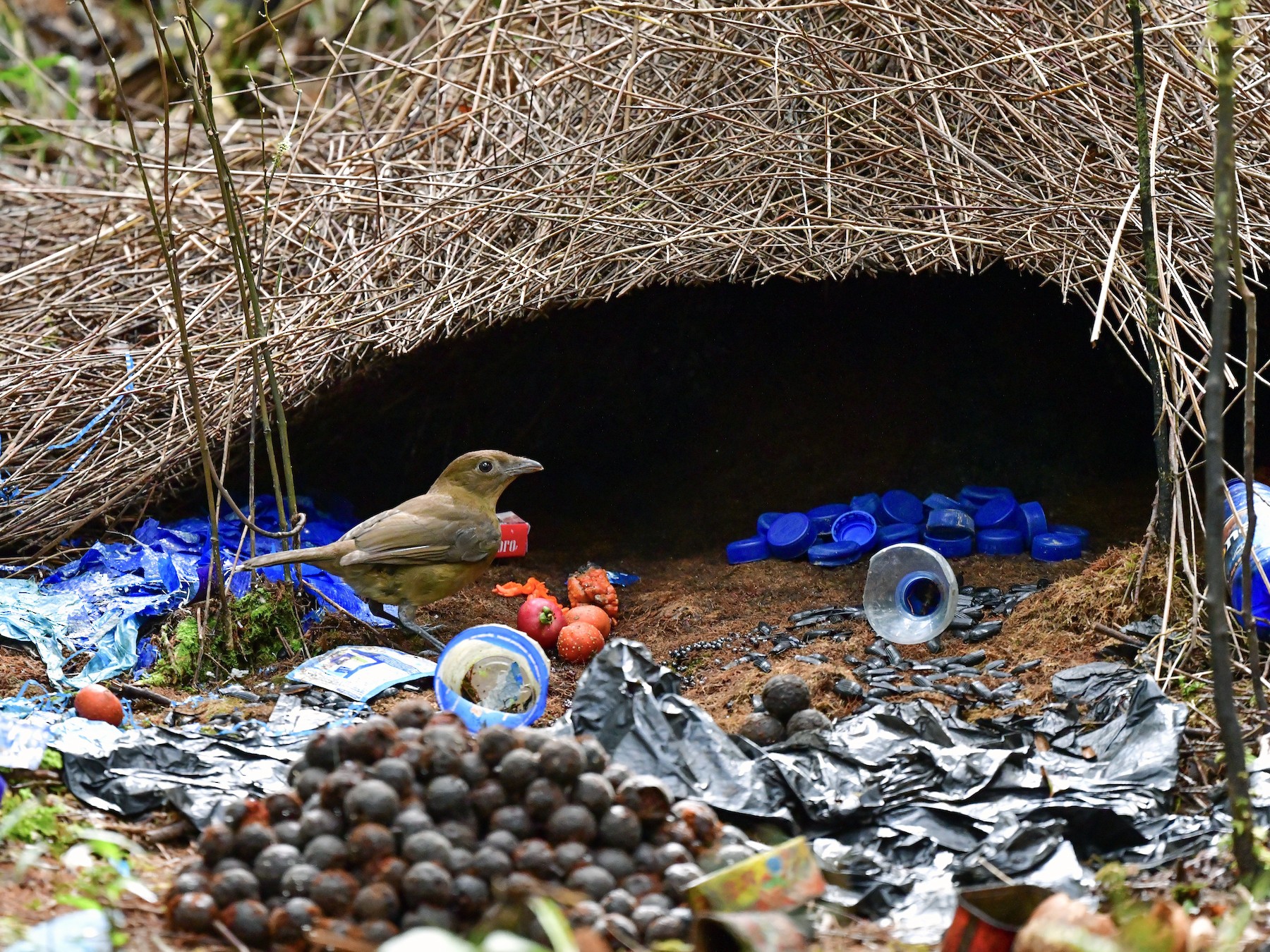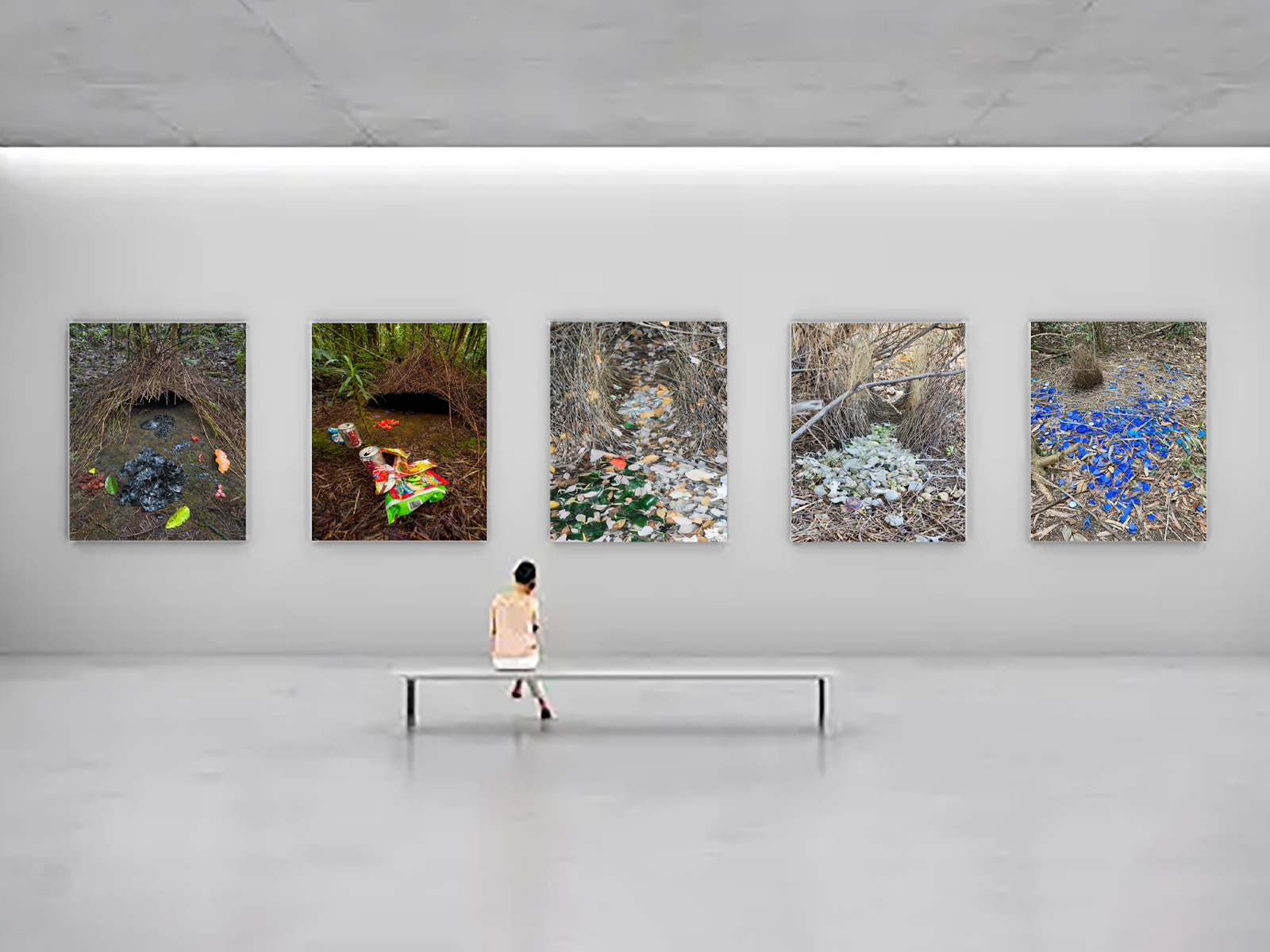


Bowerbot
robotics, AI/ML
2023-ongoing
Exploring non-human creativity in both animals and computers, Bowerbot is a robotic bowerbird that transforms a “white cube” gallery space by arranging colorful objects such as flowers, leaves, and trash. Visitors will offer Bowerbot objects, which it might accept or reject. Using artificial intelligence (AI) trained on photographs of bowerbirds’ elaborate bowers, Bowerbot will learn how male bowerbirds create “artworks” to attract a mate.
Native to Australia and Papua New Guinea, bowerbirds’ uniquely curatorial behavior has long fascinated ornithologists and evolutionary biologists, who cannot explain their creative process. Different birds choose and arrange objects in surprisingly different ways. Some might only collect blue objects and some only gray and white. Some might arrange objects into piles or gradients and some might use pops of orange and red. They are often described as the artists of the animal world because their creations are as difficult to understand as those of human artists. Their arrangements demonstrate a sensitivity to scale, composition, texture, and the interaction of color. They transcend easily measurable metrics like efficiency, quantity, and strength.
Recent advancements in AI and robotics have made this project more urgent as a future filled with robot/AI assistants looms closer. This artwork will make AI more accessible by allowing visitors to witness and reflect on an AI-driven robot making decisions in front of them. Building an “AI bird artist” will allow people to consider the loaded topic of AIs simulating human creativity from a distance. The tech world is attempting to automate human creativity through the use of AI (e.g. Midjourney, ChatGPT), something both my students and peers fear. Bowerbot will use the same technologies as AI companies to simulate bowerbirds’ creative and curatorial processes. By doing to bowerbirds what the AI industry is doing to human artists, I will understand, critique, and make visible its limitations.